Abstract
Downey, Ronald J. (University of Notre Dame, Notre Dame, Ind.). Vitamin K-mediated electron transfer in Bacillus subtilis. J. Bacteriol. 88:904–911. 1964.—Electron transfer enzymes were obtained from log-phase cells of Bacillus subtilis after aerobic and anaerobic cultivation. The cytochrome content was found to be related to oxygen tension, there being little, if any, cytochrome operative in anaerobic cells. Vitamin K levels in the two cell types did not vary as markedly. A soluble diaphorase-type flavoprotein was obtained from both types of cells which reacted with vitamin K2, K3, and certain dyes but not bovine cytochrome c. Almost 90% of this diaphorase activity was leached from intact protoplasts without the use of solvating agents or sonic oscillation. Electron transport particles capable of coupled phosphorylation were inhibited by light (360 mμ) or 2,3-dimercaptopropanol (BAL), whereas these had no effect on the diaphorase activity. Phosphorylation in a BAL-inhibited system was restored after addition of the soluble diaphorase from either aerobic or anaerobic cells. The results suggested that soluble flavoprotein components are linked to vitamin K in both fermentative and phosphorylative pathways, and that this segment is indispensable to aerobic and anaerobic respiration in the bacillus.
Full text
PDF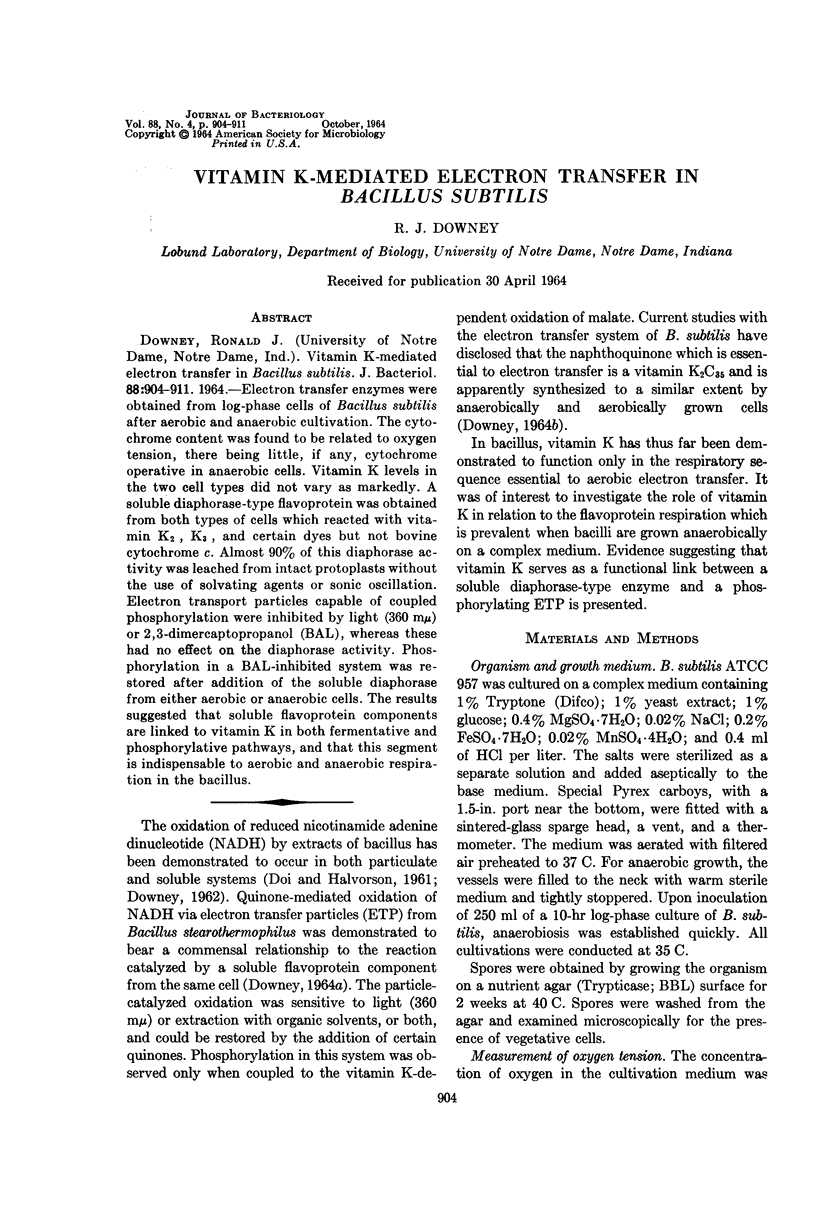
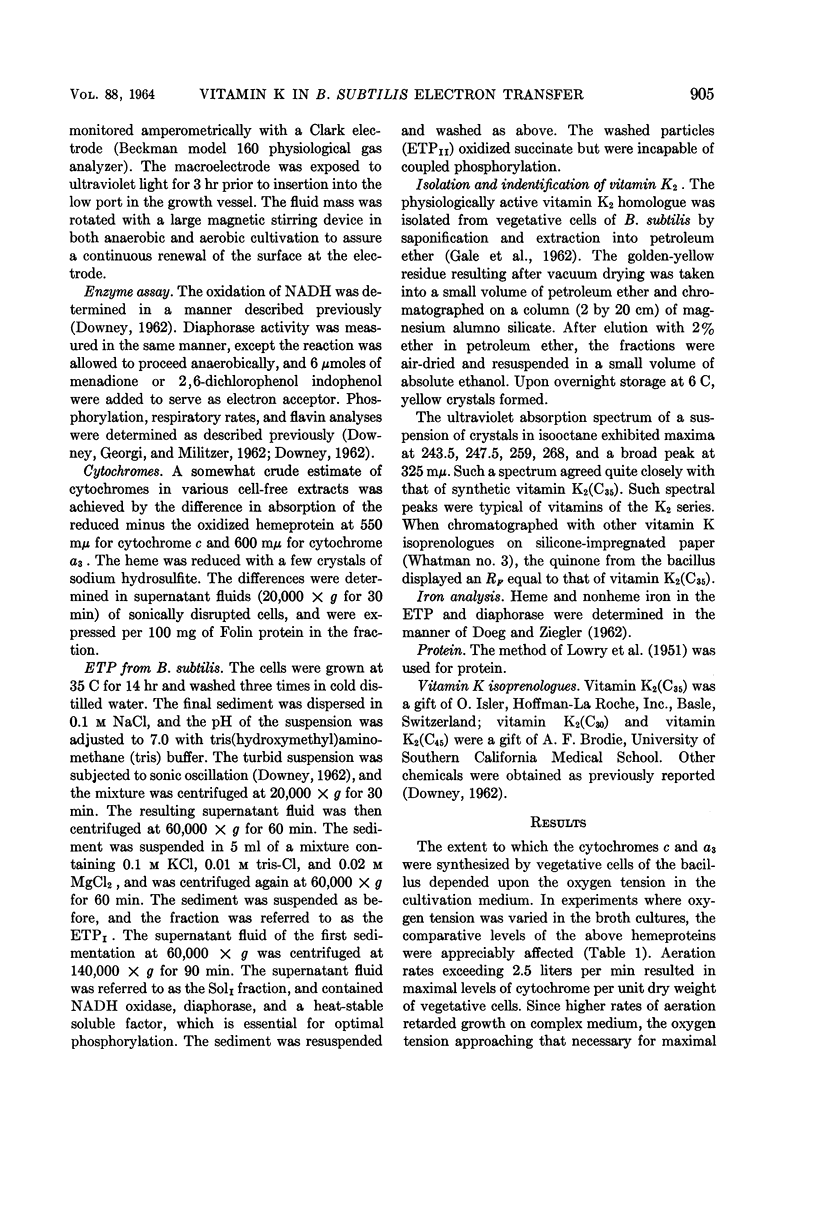
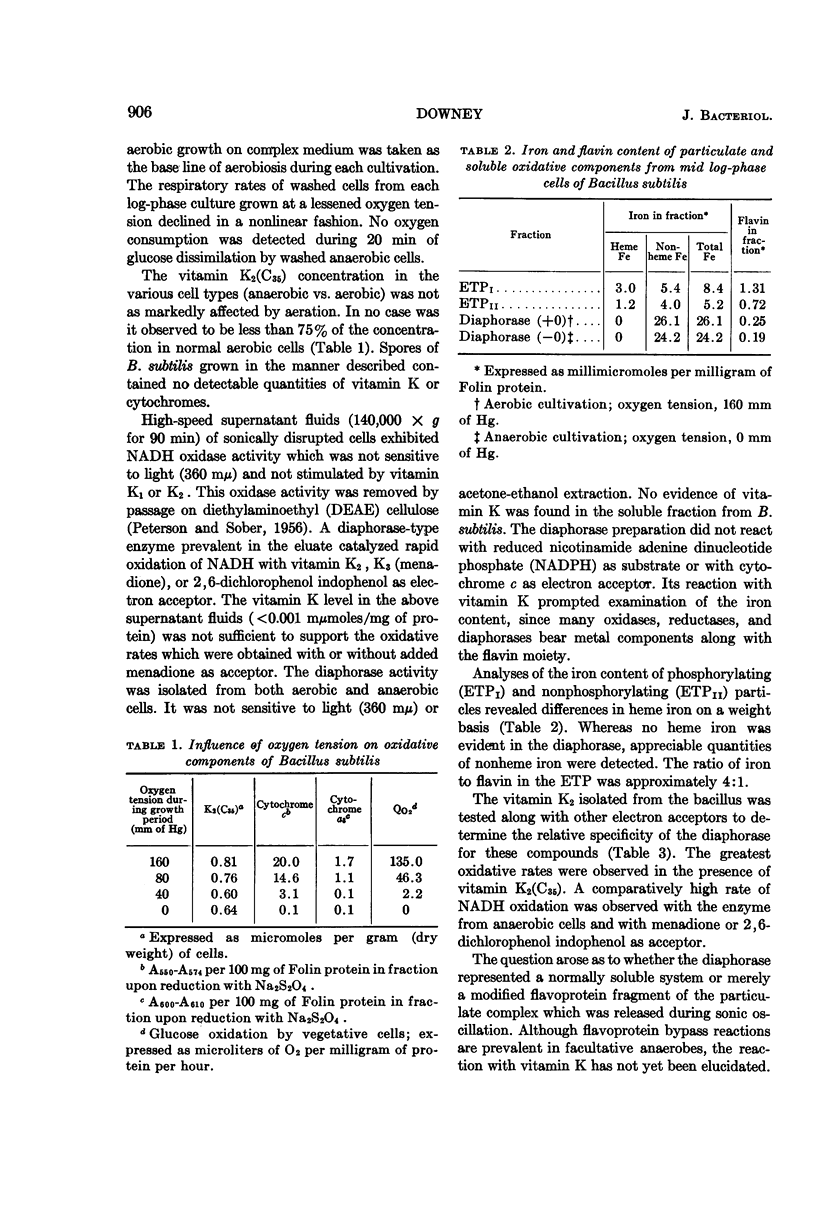
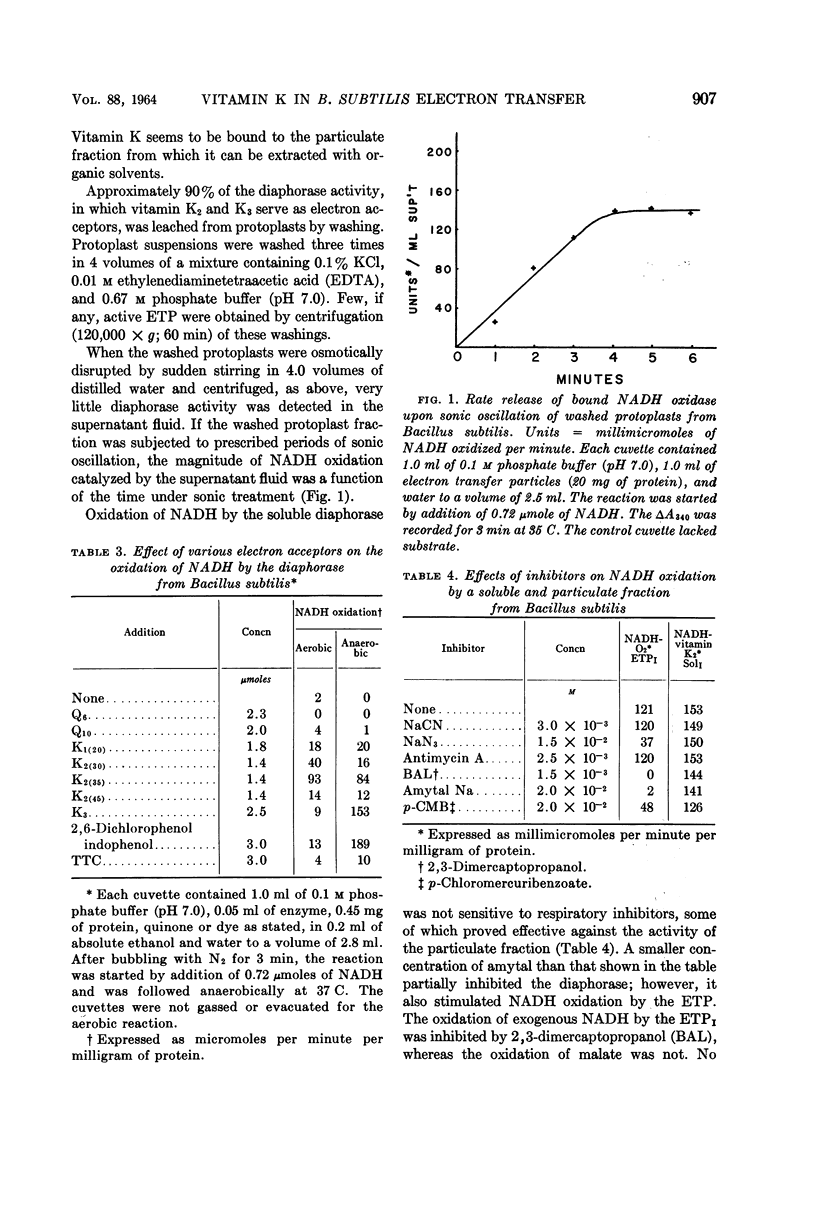
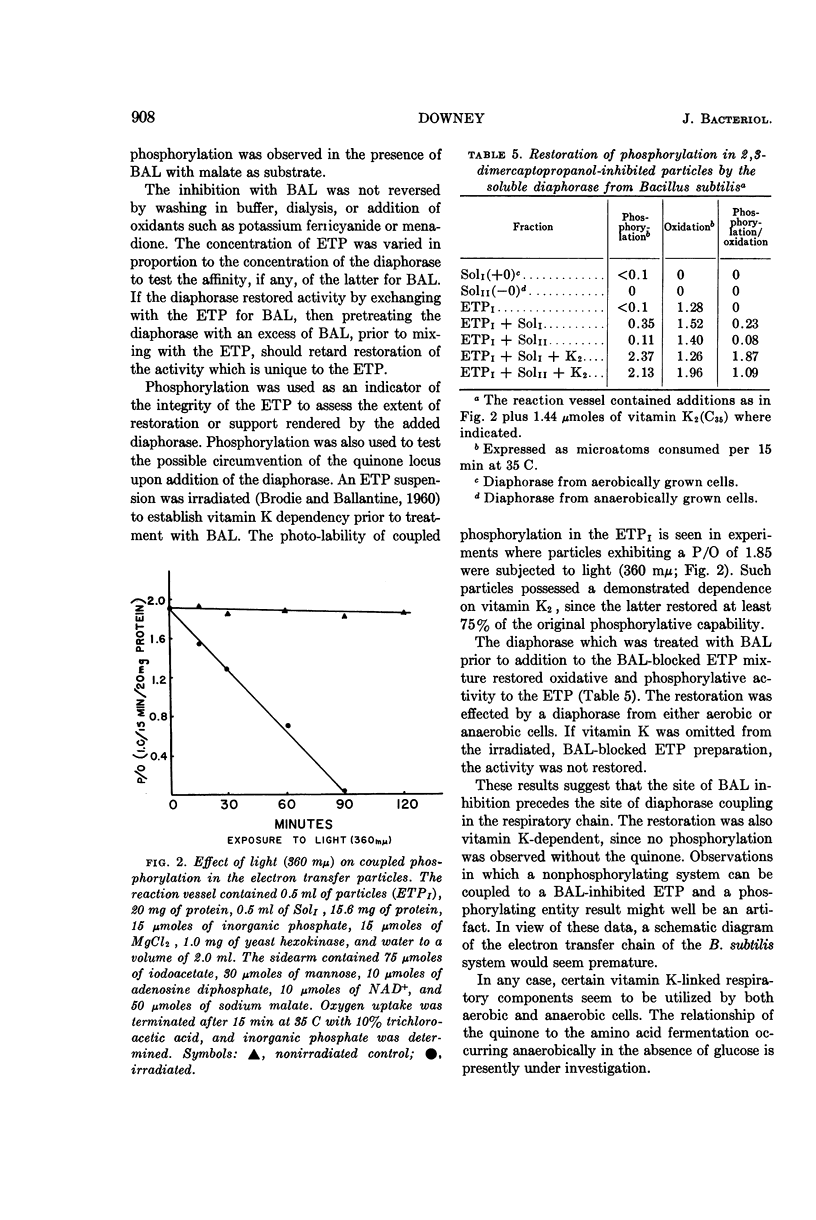
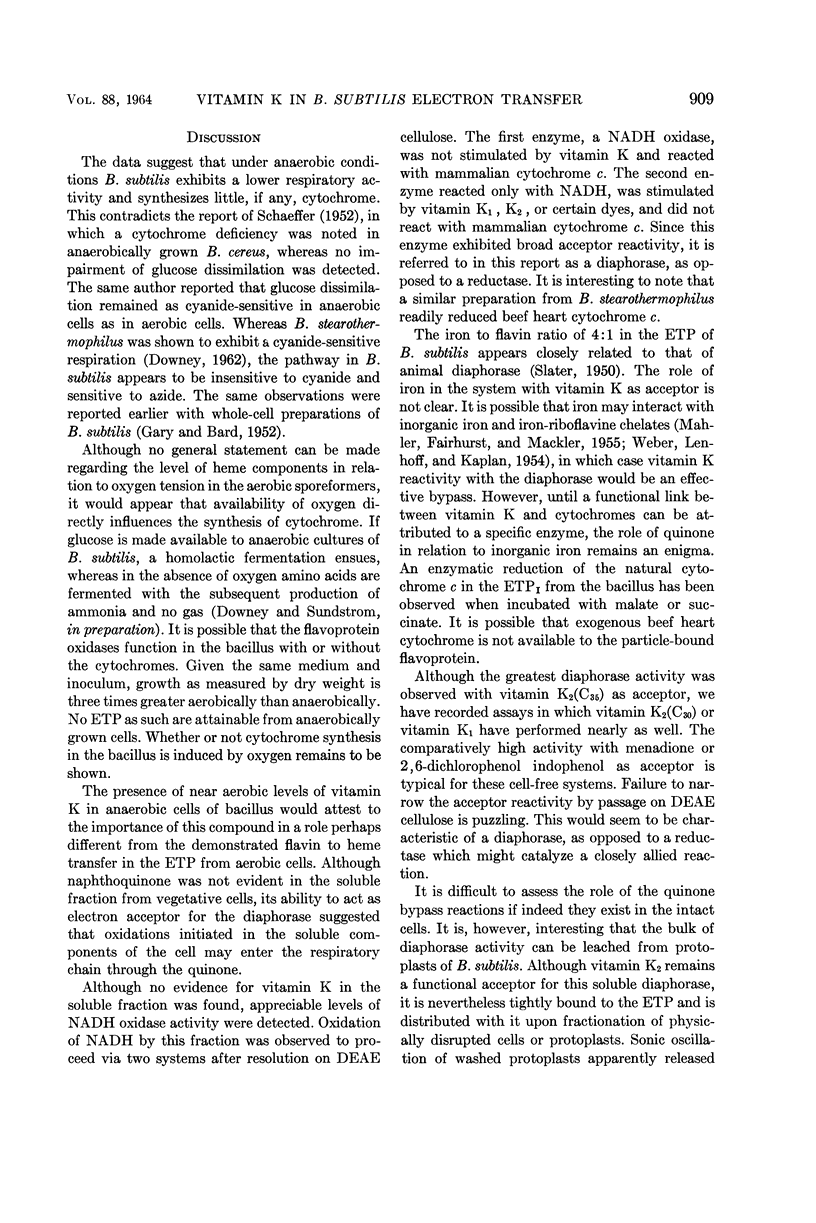
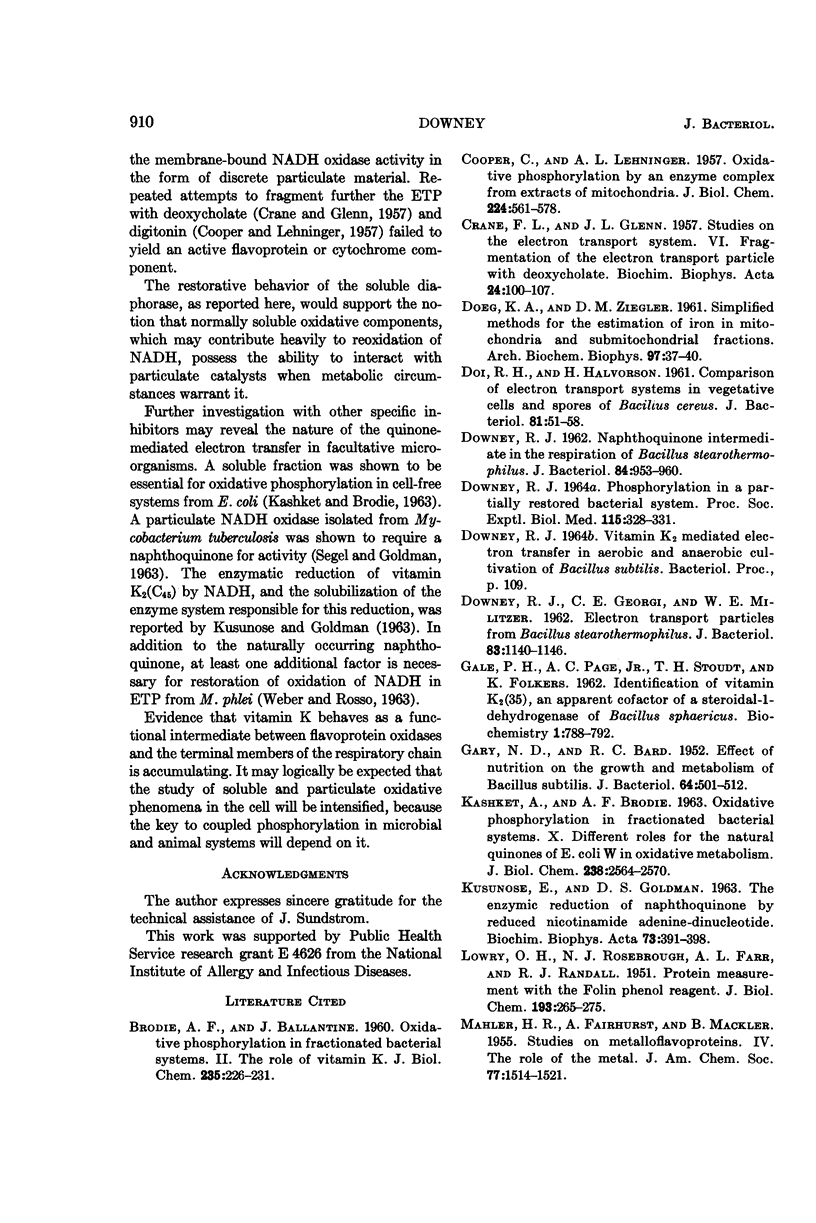
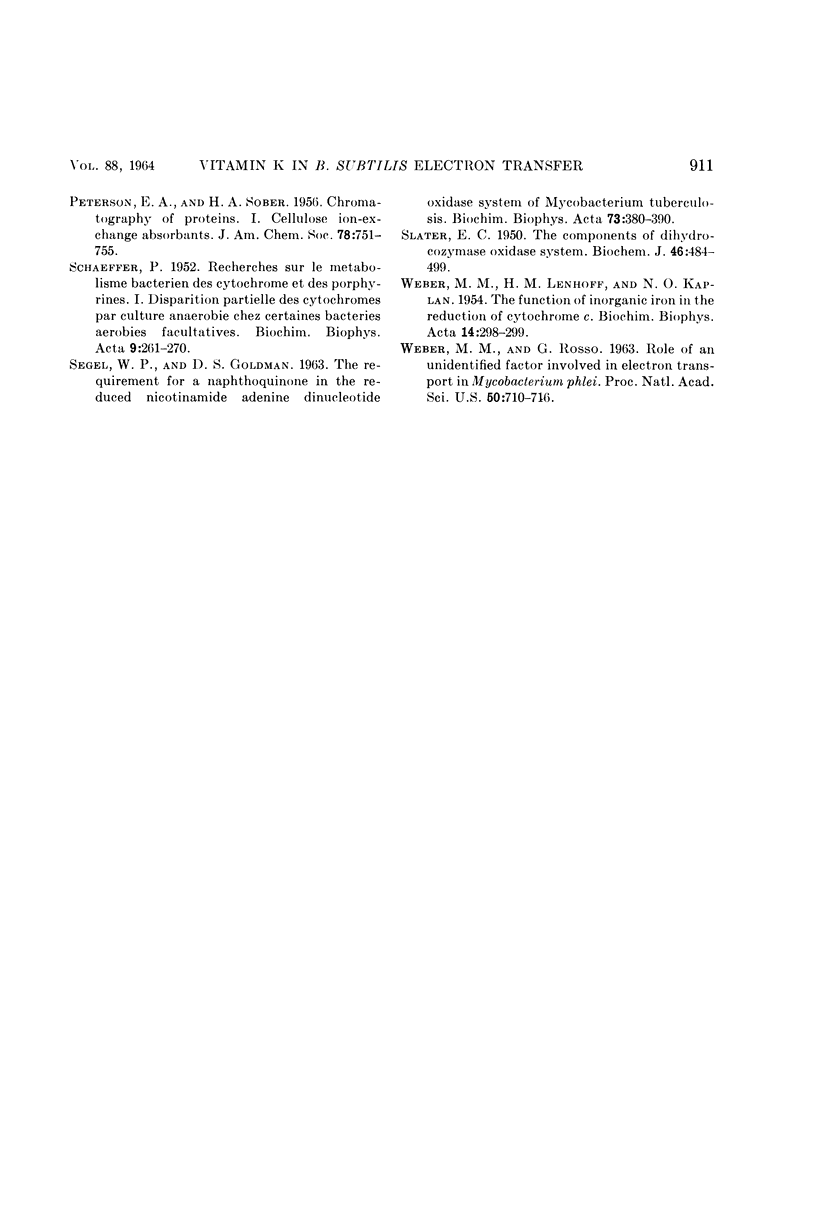
Selected References
These references are in PubMed. This may not be the complete list of references from this article.
- BRODIE A. F., BALLANTINE J. Oxidative phosphorylation in fractionated bacterial systems. II. The role of vitamin K. J Biol Chem. 1960 Jan;235:226–231. [PubMed] [Google Scholar]
- COOPER C., LEHNINGER A. L. Oxidative phosphorylation by an enzyme complex from extracts of mitochondria. V. The adenosine triphosphate-phosphate exchange reaction. J Biol Chem. 1957 Jan;224(1):561–578. [PubMed] [Google Scholar]
- CRANE F. L., GLENN J. L. Studies on the terminal electron transport system. VI. Fragmentation of the electron transport particle with deoxycholate. Biochim Biophys Acta. 1957 Apr;24(1):100–107. doi: 10.1016/0006-3002(57)90151-8. [DOI] [PubMed] [Google Scholar]
- DOI R. H., HALVORSON H. Comparison of electron transport systems in vegetative cells and spores of Bacillus cereus. J Bacteriol. 1961 Jan;81:51–58. doi: 10.1128/jb.81.1.51-58.1961. [DOI] [PMC free article] [PubMed] [Google Scholar]
- DOWNEY R. J., GEORGI C. E., MILITZER W. E. Electron transport particles from Bacillus stearothermophilus. J Bacteriol. 1962 May;83:1140–1146. doi: 10.1128/jb.83.5.1140-1146.1962. [DOI] [PMC free article] [PubMed] [Google Scholar]
- DOWNEY R. J. PHOSPHORYLATION IN A PARTIALLY RESTORED BACTERIAL SYSTEM. Proc Soc Exp Biol Med. 1964 Feb;115:328–331. doi: 10.3181/00379727-115-28904. [DOI] [PubMed] [Google Scholar]
- Downey R. J. NAPHTHOQUINONE INTERMEDIATE IN THE RESPIRATION OF BACILLUS STEAROTHERMOPHILUS. J Bacteriol. 1962 Nov;84(5):953–960. doi: 10.1128/jb.84.5.953-960.1962. [DOI] [PMC free article] [PubMed] [Google Scholar]
- GALE P. H., PAGE A. C., Jr, STOUDT T. H., FOLKERS K. Identification of vitamin K2(35), an apparent cofactor of a steroidal 1-dehydrogenase of Bacillus sphaericus. Biochemistry. 1962 Sep;1:788–792. doi: 10.1021/bi00911a010. [DOI] [PubMed] [Google Scholar]
- GARY N. D., BARD R. C. Effect of nutrition on the growth and metabolism of Bacillus subtilis. J Bacteriol. 1952 Oct;64(4):501–512. doi: 10.1128/jb.64.4.501-512.1952. [DOI] [PMC free article] [PubMed] [Google Scholar]
- KUSUNOSE E., GOLDMAN D. S. THE ENZYMIC REDUCTION OF NAPHTHOQUINONES BY REDUCED NICOTINAMIDE-ADENINE DINUCLEOTIDE. Biochim Biophys Acta. 1963 Jul 9;73:391–398. doi: 10.1016/0006-3002(63)90440-2. [DOI] [PubMed] [Google Scholar]
- LOWRY O. H., ROSEBROUGH N. J., FARR A. L., RANDALL R. J. Protein measurement with the Folin phenol reagent. J Biol Chem. 1951 Nov;193(1):265–275. [PubMed] [Google Scholar]
- SCHAEFFER P. Recherches sur le métabolisme bactérien des cytochromes et des porphyrines. I. Disparition partielle des cytochromes par culture anaérobie chez certaines bactéries aérobies facultatives. Biochim Biophys Acta. 1952 Sep;9(3):261–270. doi: 10.1016/0006-3002(52)90160-1. [DOI] [PubMed] [Google Scholar]
- SEGEL W. P., GOLDMAN D. S. THE REQUIREMENT FOR A NAPHTHOQUINONE IN THE REDUCED NICOTINAMIDE-ADENINE DINUCLEOTIDE OXIDASE SYSTEM OF MYCOBACTERIUM TUBERCULOSIS. Biochim Biophys Acta. 1963 Jul 9;73:380–390. doi: 10.1016/0006-3002(63)90439-6. [DOI] [PubMed] [Google Scholar]
- SLATER E. C. The components of the dihydrocozymase oxidase system. Biochem J. 1950 Apr;46(4):484–499. doi: 10.1042/bj0460484. [DOI] [PMC free article] [PubMed] [Google Scholar]
- WEBER M. M., LENHOFF H. M., KAPLAN N. O. The function of inorganic iron in the reduction of cytochrome C. Biochim Biophys Acta. 1954 Jun;14(2):298–299. doi: 10.1016/0006-3002(54)90182-1. [DOI] [PubMed] [Google Scholar]
- WEBER M. M., ROSSO G. ROLE OF AN UNIDENTIFIED FACTOR INVOLVED IN ELECTRON TRANSPORT IN MYCOBACTERIUM PHLEI. Proc Natl Acad Sci U S A. 1963 Oct;50:710–717. doi: 10.1073/pnas.50.4.710. [DOI] [PMC free article] [PubMed] [Google Scholar]


